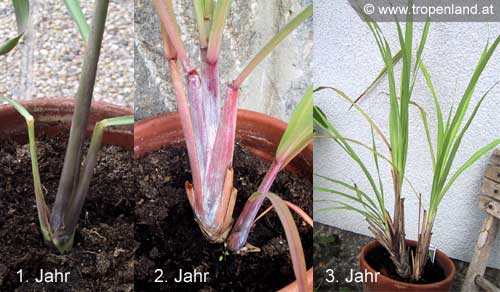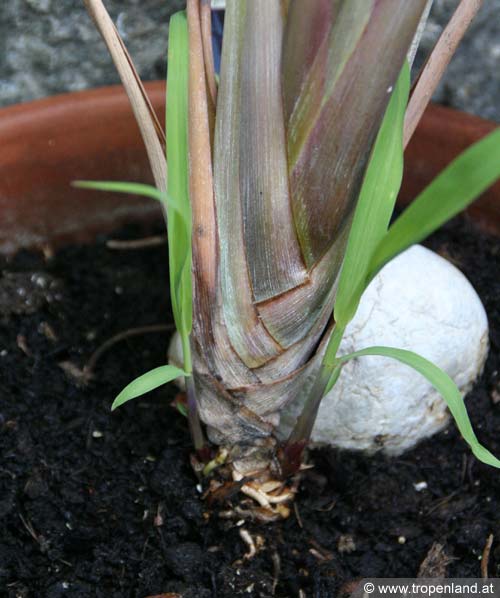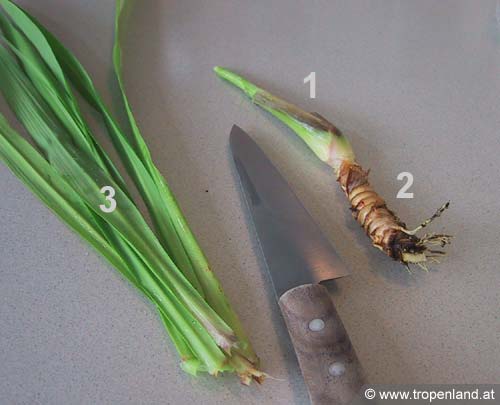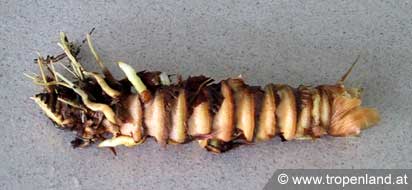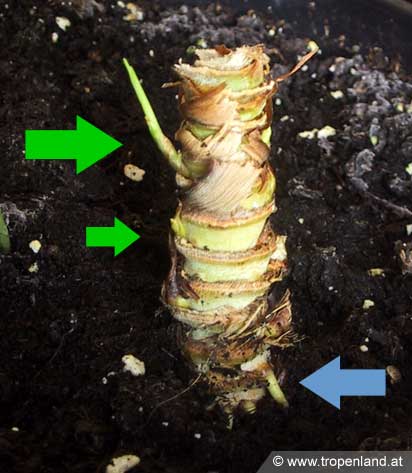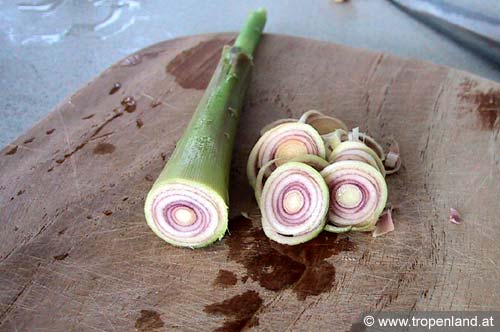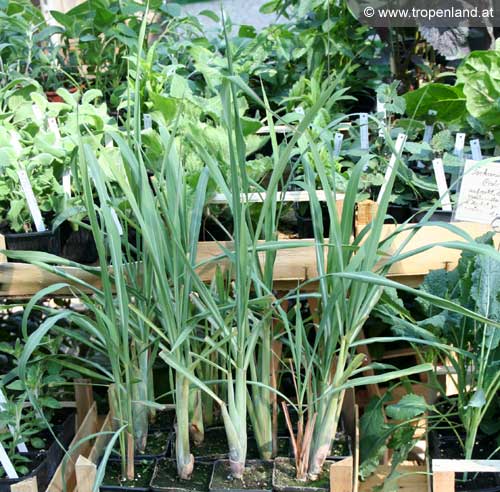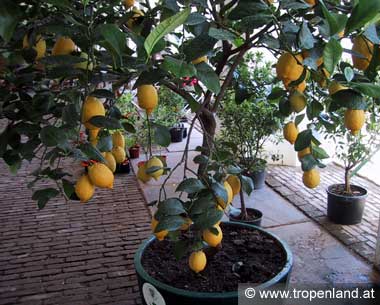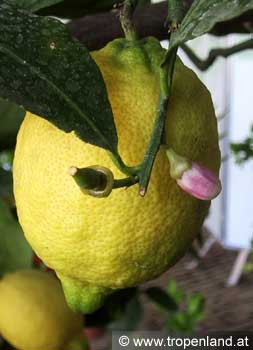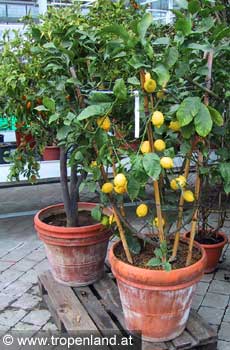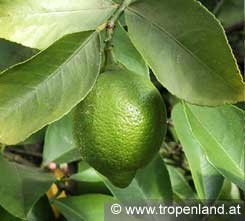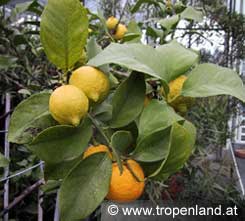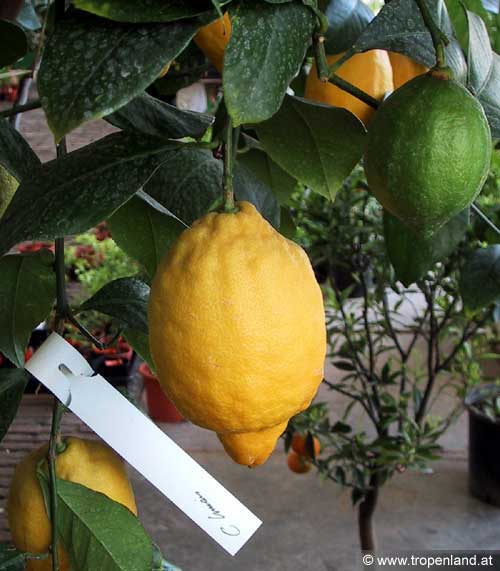the vanilla regions:
is originally vanilla from Central America (Mexico to Panama). From 19 Century cuttings were taken to other parts of the tropics. get
| 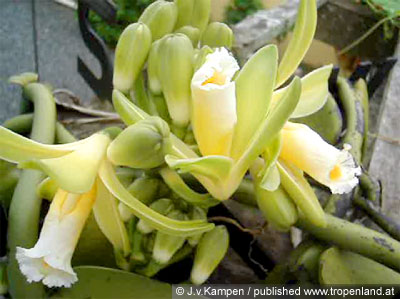
for the coveted pods are the flowers of Hand-pollinated. |
Growth:
It is a climber, amphoteric orchid. That is, they grow up to support plant and holds it there with adventitious roots. The vanilla orchid is the only one that finds use as a crop. You can be up to 10m in length. If it is used economically, but they are kept small in order to reach all parts of the plant. The oval are fleshy leaves up to 20cm long, succulent. The green to yellow flowers develop from buds that grow from the leaf axes. Per inflorescence usually only one flower is open. The flowers open in the morning for several hours. They are pollinated by hummingbirds in Central America and insects. In other areas, are very popular, they must be pollinated by hand, otherwise no fruit formed.
Manually pollination:
pierce Using a stick, a pin or similar to the hymen of the flower. It lies between the male pollen and female stigma package. Then press each other pollen and stigmas. Pollination you should clock leader between 6 und 12 clock, then you get the best results.
location:
| summer | As in nature needs us too vanilla for something where they can grow up. It offers itself to the use of a vertical branch or trunk that is miteingegraben into the earth. You can also use a plastic pipe or the like and wrap it with coconut fibers. In her home growing vanilla in sheltered, partially shaded, humid locations. Consequently she feels at ease in a warm house. You like it when it daily with warm Water is sprayed. In the summer you say, for slight shading to high temperatures. |
| Winter | in winter can drop the temperature to about 15 ° C. However, it is a dry root ball must be ensured. Entertainment room are not ideal for the vanilla, as the humidity should be 75% or more. Such high humidity is not achieved, especially in winter. |
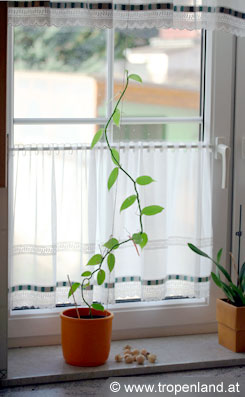
A good location for the vanilla is a bright window with no direct sunlight. | 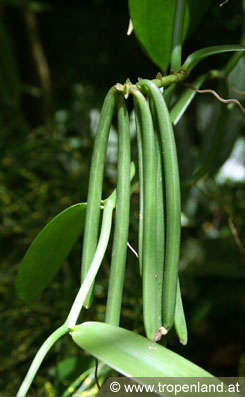
The fruit of the vanilla are rather inconspicuous and are often not perceived. |
cultivation / propagation:
Maybe you can get a vanilla orchid plant in a nursery. The fruits do contain numerous dust-like seeds, which can not be used for cultivation. Therefore, the Vanilla is propagated by cuttings, which are relatively hard to get. Most suitable head cuttings that are removed in a length of 30-40cm. About half of them (leaves removed) is placed in the earth. The upper part is attached to a climbing aid. After the casting is placed over the whole a film cover, hold up to the humidity. Place the planter in a shady but bright spot at a temperature of about 25 ° C.
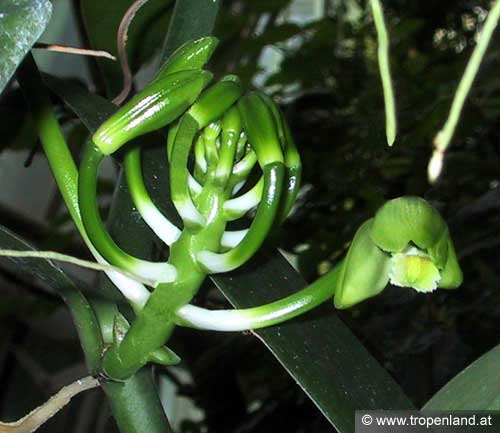
buds of vanilla, right opens the first flower. |
|
substrate:
The roots need loose, richly aerated substrate. the fleshy roots are not receiving enough oxygen, die it off. It's easiest if you get in the shop a seed material for orchids. It is a friable, well lüftdurchlässiges material.
casting:
Pour the vanilla never with cold water. Always use rain water or softened water. Make sure that there is no waterlogging. Wait until the substrate always dry before watering again. Especially in winter, watering sparingly.
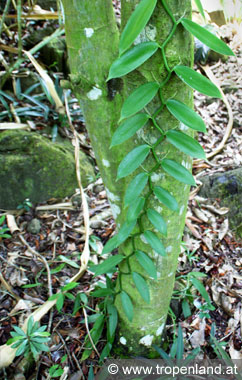
Vanilla is a climbing plant belonging to the family of the Orchid Family. | 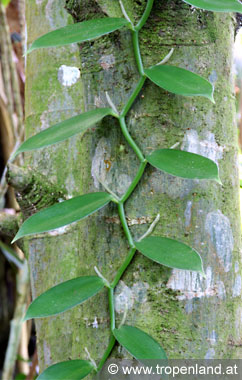
If possible can you put the vanilla in the house a branch available. As the natural habitat they use it as a climbing frame. |
fertilizing:
In summer you can be fertilized once a month. Do not use mineral fertilizer, otherwise the accumulation of salts in the soil is. Most suitable orchid fertilizer from your local dealers.
fruiting / harvesting:
is at the fruit it is up to 35cm long capsules. Often they are referred to as pods, but this is incorrect from a botanical perspective. From pollination to maturity of the fruit, it takes about 5-9 months. Flowers and fruits are therefore to be expected from us after a minimum of 3 years. It is important to get the right harvest time. Harvest too early is not the full flavor to expect and the durability is limited. It must, however, before maturity, before the yellow fruits split open, and be harvested.
| 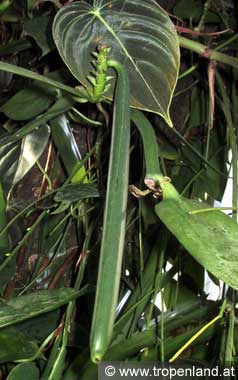
Ripening fruit, greenhouse (Austria) |
fruit use: The fruit
consists of approximately 35% water, 25% sugar, 15-25% cellulose, 15% fats, 5% minerals, 1-3% vanillin and low quantities of many other substances. The vanillin is mainly responsible for the aroma, but also other substances contribute to the unique taste / smell.
The vanillin is bound to the harvest of glucose. It is Vanillosid (a glucoside). The fruits have therefore at this stage, no vanilla flavor. By a fairly expensive treatment you get the desired flavor.
step 1 "killing": dipping the fruit in hot water (65-70 ° C) for 2 to 3 minutes, "kill" the fruit, and forestall the spread of vegetative processes.
Step 2 "fermentation" let ferment for 1-2 weeks in moist, warm environment. This effect can, for example, by wrapping in wet towels and place on a warm heating. The fruits are beginning to brown and shrivel, thereby to form the glucoside is split by vanillin. The formation of vanillin is visible through the formation of white crystals.
Step 3 "drying" Now the fruits are dried in the shade, which can take 2-3 months. You can also do this slowly and carefully carried out in the oven or on the heating (45-50 ° C). But even in the oven, it takes a long time.
Step 4 "storage" After drying, the vanilla or stored for about 3 months, meaning it develops its final flavor.
Because of the manual pollination and the long manufacturing process is the vanilla one of the most expensive spices. It is mainly in the food industry used as a flavoring, but also it is used for perfume. Synthetically produced vanillin smell but very similar to the vanilla capsule, but lacks many of the accompanying substances of the fruit. This allows the artificially produced vanillin does not replace the fruit in many areas.
genus Info:
The genus Vanilla comprises about 100 species. Vanilla planifolia is also called spice or real vanilla. Other species whose flavor but markedly from that of V. panifolia distinguishes are:
Vanilla pompona
 | called Guadeloupe vanilla or Antilles. (West Indies) |
Vanilla tahitensis
 | Probably a hybrid between V. planifolia and V. pompona is. (Tahiti) |
Vanilla babelata
 |
|
Vanilla roscheri
 |
|
Text: Dominik re
